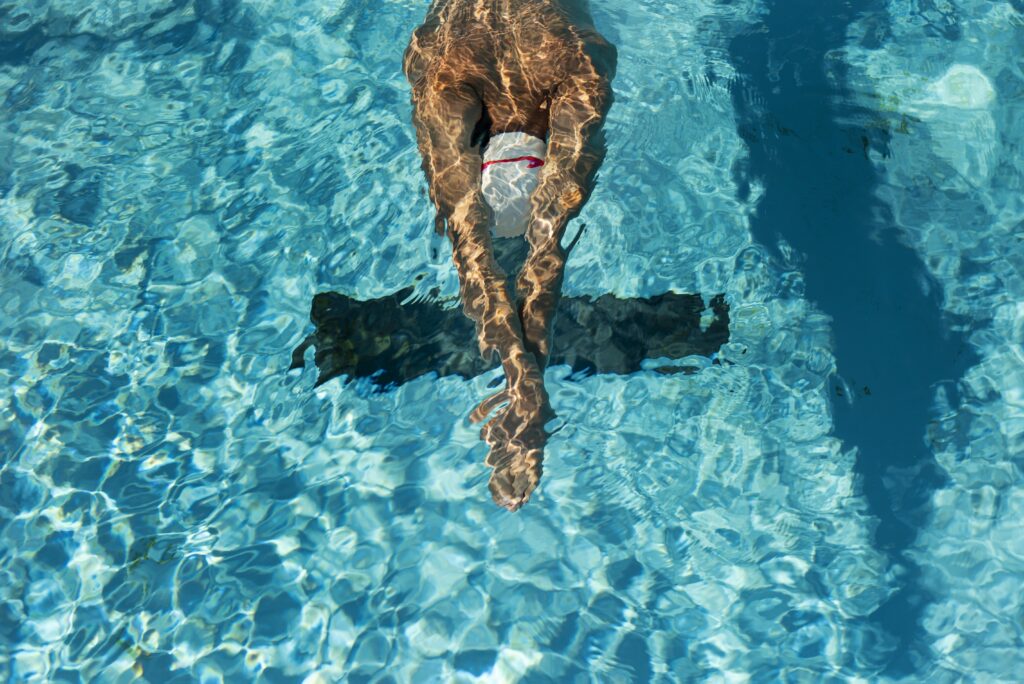When someone comes to healthy sports, swimming is often at the top of the list of recommendations. However, for people with certain health conditions, there are important aspects to keep in mind.
As with any sporting activity, it’s advisable to progress gradually.
Benefits of Swimming
When summer arrives, holidays and splashing around usually go hand in hand for many people, whether at the beach or in swimming pools. But it’s worth taking things a step further: the Professional College of Physiotherapists of the Community of Madrid (CPFCM) recommends making the most of the summer period to practise swimming in a healthy way. It can help relieve various ailments and serves as a regular form of exercise.
In fact, it’s advisable to keep up this routine throughout the year using indoor pools, if outdoor swimming isn’t an option. Swimming involves widespread muscular activity, helps build strength, and reduces the risk of cardiovascular issues and being overweight, among other benefits.
Debunking Common Myths
However, the CPFCM reminds us that while swimming is one of the most recommended sports and can be practised at almost any age, there are certain limitations when it comes to specific conditions (such as respiratory infections, open wounds, or shoulder and knee issues), as well as rules that should be followed to prevent injury.
The physiotherapists of Madrid analyse four common myths about swimming:
“No risk involved.” – False.
It’s true that recreational swimming doesn’t require specific preparation. However, as with any physical activity, you should progress gradually to avoid injury.
You shouldn’t go from being inactive all year to attempting 40 lengths of an Olympic-sized pool on the first day. It’s better to start with, say, 20-minute sessions and gradually increase the swimming volume (duration) day by day, depending on your fitness level.
“It’s a low-impact exercise.” – True, with caveats.
Swimming indeed involves less impact on the joints compared to sports like running. However, swimming for hours every day does have a significant impact – particularly on areas like the shoulder.
This impact isn’t necessarily harmful, and scientific evidence shows that strength training is very beneficial. Again, the key is gradual progression. You only need to take special care when dealing with a specific problem or if acute pain arises; in such cases, you should stop and consult a physiotherapist. In most situations, you can return to exercise once the acute phase has passed.
“There’s a perfect technique.” – Another false myth.
There isn’t a single ideal swimming technique that suits everyone. It depends on each person and their individual condition.
People with certain health issues need to take precautions when swimming and should consult a physiotherapist. Choosing the wrong stroke can worsen an existing problem.
As a general guide, here are the most common musculoskeletal problems in four areas of the body, and which strokes should be avoided in each case:
- Lower back pain: Avoid breaststroke (which involves prolonged extension) and butterfly (due to forced lumbar extension). Front crawl or backstroke are often better options.
- Neck pain: Avoid breaststroke and butterfly, as these involve keeping the head extended above water, putting strain on this sensitive area.
- Shoulder pain: Avoid front crawl and backstroke. Breaststroke is usually preferable as it has less impact on the shoulders.
- Knee pain: Avoid breaststroke due to the specific kick used, which puts more strain on the joints. The other strokes are generally fine.
“Swimming in the sea is bad.” – False.
Swimming in saltwater isn’t inherently negative – quite the opposite. The salinity actually helps the body float more easily. The technique may need slight adjustments due to the water movement, which is more pronounced than in a pool.
What matters most in this case is safety. You should respect the sea, not fear it. If you’re unfamiliar with a beach, make sure to find out about currents and the sea floor. It’s always safer to swim parallel to the shore in shallow waters and choose beaches with lifeguard services.
If someone plans to swim far from the shore, they should do so with a partner or group, or carry an inflatable safety buoy that makes them visible from a distance – some even have space for a phone in case of emergencies. Even a minor issue like a cramp or muscle strain can become serious if you’re alone far from the shore. Some people also feel dizzy due to the water movement when swimming in the sea.
Pre-Session Preparation
Anyone planning an intense swimming session should take a few minutes beforehand to do proper warm-up exercises – joint mobility work, dynamic stretches, and muscle activation. This will likely help reduce the risk of injury and improve both enjoyment and performance during the session




Leave a Reply